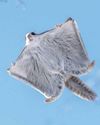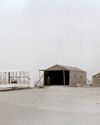
"I consider trial by jury," Thomas Jefferson said, "as the only anchor ever yet imagined by man, by which a government can be held to the principles of its constitution."
Trial by jury has been around for hundreds of years. England's Magna Carta (1215 A.D.) mentions a form of jury trial. But it wasn't until the 1600s that the accused were given the right to a trial by jury to safeguard their rights. In response to the Stamp Act of 1765, which denied violators in the American Colonies a trial by jury, the Stamp Act Congress stated: "[T]rial by jury is the inherent and invaluable right of every British subject in these colonies."
All state constitutions guarantee this right, which dates back to the 13 Original Colonies. In 1791, the Bill of Rights made it the law of the land in the Sixth Amendment to the Constitution: "In all criminal prosecutions, the accused shall enjoy the right to a speedy and public trial, by an impartial jury of the State and district wherein the crime shall have been committed." But how are jurors selected? What is jury duty like? I recently discovered the answers to these questions.
Similar to other U.S. citizens who are registered voters with driver's licenses or state identification cards, I was eligible to serve on a jury. When I received a summons in the mail to report for jury duty, I made a note of the date and cleared my calendar. People who fail to answer a summons can be held in contempt of court and face punishment or legal action against them. Employers are required to allow their workers to report for jury duty without penalties to them.
This story is from the May/June 2023 edition of Cobblestone American History Magazine for Kids.
Start your 7-day Magzter GOLD free trial to access thousands of curated premium stories, and 8,500+ magazines and newspapers.
Already a subscriber ? Sign In
This story is from the May/June 2023 edition of Cobblestone American History Magazine for Kids.
Start your 7-day Magzter GOLD free trial to access thousands of curated premium stories, and 8,500+ magazines and newspapers.
Already a subscriber? Sign In

Airborne Animals
Humans have taken to the skies in balloons, gliders, and airplanes-but we're not alone among the clouds. Animals of all sorts have evolved to harness wind power.

TAKING OFF
The Wright brothers expected airplanes to “take off,” but even they might be amazed at the way the airline industry has become big business. In the past, it was expensive to send something by plane.

WHY KITTY HAWK?
The Wright brothers searched carefully for the best place to test their gliders and flying machines. Their main concern was for good, steady winds. But they also hoped to find a remote location to allow them to perform tests away from the public eye.

Da Vinci's 4 Designs
Have you ever wondered how a bird flies? Leonardo da Vinci (1452–1519) did. He thought that understanding how a bird flies would provide the key to human flight. So, what did da Vinci learn from birds?

Along Rivers and Through Prairies
An Interview With Dr. Robert Moore

Routes Well Traveled
The United States is not the only country that celebrates its historic routes. But the routes included here are much older!

Last Stop, Independence
For many Oregon Trail pioneers, Independence, Missouri, was the last stop in the United States. Soon after it was founded in 1827, the waterfront town became a strategic city on the Missouri River.

Danger on the Trail
About 20,000 emigrants died on the Oregon Trail. That averaged to about one grave for every 100 yards from the Missouri River to the Willamette Valley. And because pioneers had to keep to a steady pace each day, burials on the trail were hasty. There often was no time to create a marker to note a burial site.

Keeping the Legacy Alive
Several sites in Virginia work to keep alive James Monroe's legacy. In Westermoreland County, Monroe Hall, Monroe's birthplace and the place he called home until he was 16 years old, has been re-created.

The American Colonization Society
In 1821, President James Monroe signed into law the controversial Missouri Compromise.